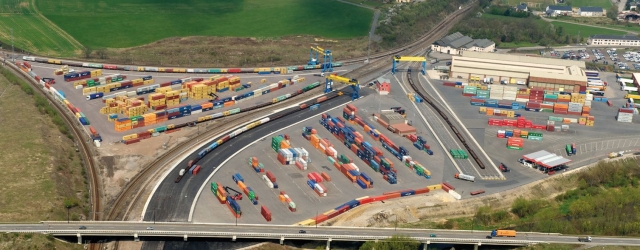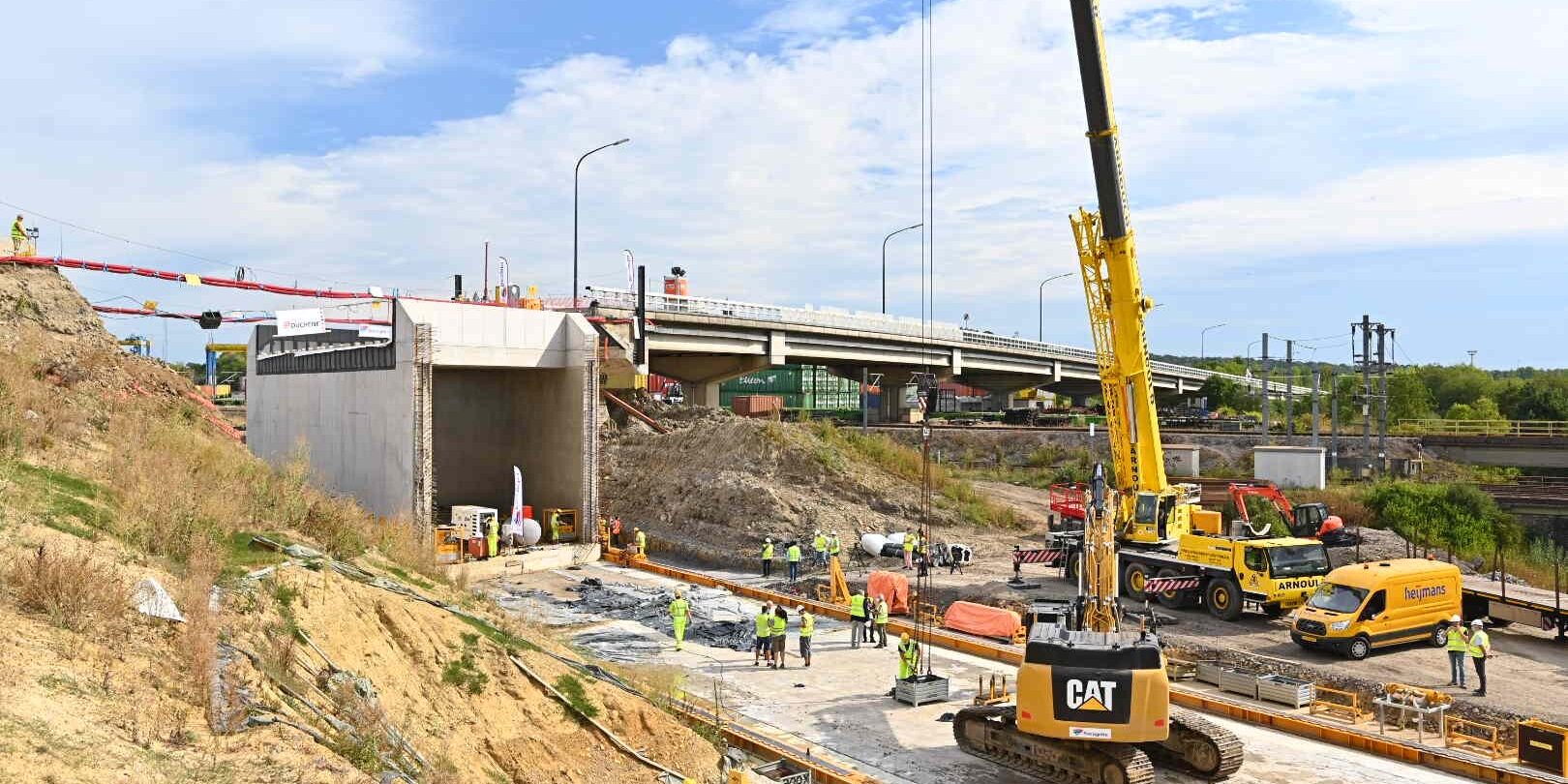This important stage in the work involved in the new 165/3 link to connect Belgium and France, as well as offering access to the Terminal Container Athus (“TCA”), was completed on Friday ! The structure of a new rail runnel was put in under Avenue de l’Europe (N830). Weighing almost 3,000 tonnes, it was moved into its final position thanks to the use of around forty jacks. We can explain everything !
A SIGHT TO BEHOLD
The “beast” is a staggering 9.2m tall, 8.6m wide and 33m long. It was constructed in the space of 4 months just a few metres away from its final position. The challenge? Positioning this imposing structure under one of the busiest A roads in the Luxembourg province, Avenue de l’Europe (N830).
To achieve this, the road was closed to traffic in the middle of August in order to dig an opening (13,000 m3 of excavated material) to house the new rail tunnel. This Friday, it will be moved 45m using jacks. 42 of them to be precise. It will be lifted up by 40 side jacks and pushed into position by 2 larger jacks. The process should take a total of 5 hours.
And then?
Extensive backfilling and road works will be carried out to repair the N830. This work is due to be completed by the end of August The work to create the new rail platform and the entire infrastructure (guttering, ballast, sleepers, rails etc.) for the new link will begin at the same time and is due to be completed next summer.
A detailed explanation about creating this rail tunnel link between Athus and Mont Saint-Martin is available (in French) in a television report broadcast by RTBF.
A NEW LINK TO ENCOURAGE ECONOMIC DEVELOPMENT
The Terminal Container Athus is Belgium’s number one “dry port”. In 2019, thanks to a combination of rail and road transport, some 76,067 shipping containers passed through its facilities on their way to ports in the North Sea or the Sarre/Lorraine/Luxembourg region.
Up until now, operators keen to make use of the services offered by the “TCA” did not have direct access to France, making journeys more complicated and reducing the appeal of its multimodal solutions. Aware of the economic and environmental issues at stake, Infrabel and the Intermunicipal organisation IDELUX – which manages the site – have been pursuing the idea of a new link between Athus (B) and Mont‐Saint‐Martin (F) for many years. This project is now going ahead, thanks to financial and operational contributions from a number of partners including Europe, the Federal Government, Wallonia, Infrabel, IDELUX and SNCF Réseau.

This work will turn the Terminal Container Athus from a “terminal” into an “international hub”, offering fantastic potential for economic development for this 16-hectare site (which employs 49 people) and for the whole of South Luxembourg. The project will therefore help boost the capacity of the international freight corridor to which the “TCA” is connected, and promote the “modal shift” that everybody is so keen to achieve.

GREATER CAPACITY BETWEEN THE NORTH SEA AND THE MEDITERRANEAN
Athus is on the edge of one of 3 European freight corridors that travel through Belgium, the Rail Freight Corridor North Sea‐Mediterranean (RFC NSM), which connects the port of Antwerp to the Mediterranean. Last year more than 11,500 goods trains followed this route, which is commonly referred to as “Athus‐Meuse”. That means that around 13 million tonnes (gross tonnage) travelled by rail, preventing the equivalent of around 400,000 articulated lorries from travelling on our roads! It is estimated that rail transport consumes 6 times less energy than road transport, whilst emitting 9 times less CO2.
Creating this new link will further extend the transport capacity of this corridor, by creating two tracks to France. It also offers access to France for the “Brussels‐Namur‐Arlon” line, the RFC2’s secondary route.
More generally, establishing this missing link is one factor that will help European and Belgian rail companies achieve the recently announced ambition of doubling the volumes of freight transported by rail between now and 2030. All of the partners involved in this project are therefore contributing to European targets for reducing pollution and cutting down road congestion.
A TOTAL INVESTMENT OF €20.2 MILLION
The “Athus‐Mont‐Saint‐Martin” link is one of the projects in Infrabel’s PSPI (multi-annual strategic investment plan). As such, it is being funded thanks to a Federal contribution released by the Federal Minister for Mobility (the so-called “virtuous” billion) of €9.2 million. The Walloon Region is co-financing the project with a contribution of €5.1 million. European subsidies (CEF and ERDF for capped totals of around €2.8 million each) as well as a contribution from IDELUX (€300,000) and from SNCF Réseau make up the total budget of €20.2 million.








